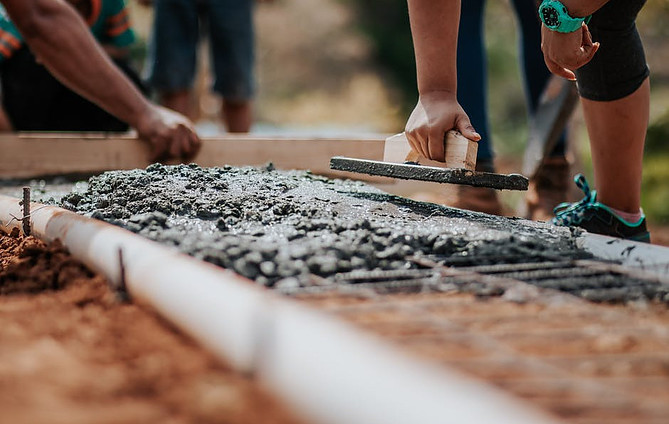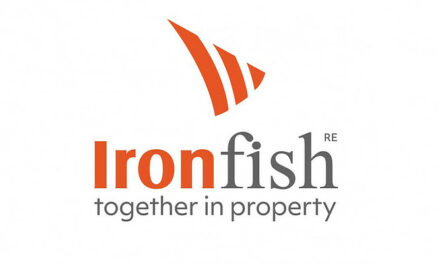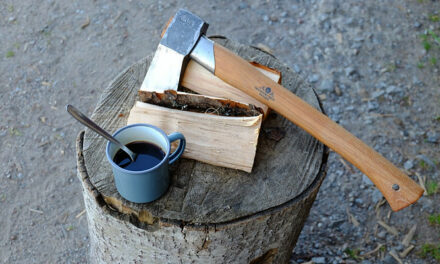Would you like to know about what is concrete? What are the uses of concrete? What should you know before getting a concrete? What are the methods for cleaning a concrete surface? What is the best time for getting the concrete poured? What is the concrete curing process? What to do after the concrete is poured? What are the things you should and shouldn’t do after pouring a concrete? If you want to know the answers to all these questions and more information regarding a concrete, you have clicked on to the right article.
In this article, I am discussing in great detail about the concrete along with some of my own experience, that can help you if you are planning to concrete during your property development process. Let’s say concreting a driveway. Moreover, this article will also discuss other findings related to the topic.
First thing first. Let’s define the concrete.
What is Concrete?
Concrete is a type of building material that is used in construction. It is known for its durability. Concrete material is a mixture of fine aggregate material, cement and coarse aggregate material, which is then mixed with water.
For binding material, lime is used in place of cement for lime concrete. For the purpose of road construction, bitumen is used for asphalt concrete.
Concrete comes in many designs and shapes.
What are the Uses of Concrete?
Following are some of the key uses of concrete material:
1. For Patios and Driveways
Concrete can be used as a surface for patios and driveways, due to its variety and designs. It is also an option with less maintenance.
Tip: Concrete driveways are different from asphalt driveways.
2. In place of wood
In construction, concrete is preferred in a place of wood. Again, that’s because it is a cost-effective option.
3. In Ceilings
Concrete material is resistant to fire. That is why it is a suitable material for the ceiling of rooms. For example, as a slab.
4. For Floors
Concrete makes an ideal surface for the floor. It reflects light. It remains cool and is easy to clean.
5. For the construction of Dams
For the construction of dams, concrete is an excellent choice due to its, high strength and durability.
The purpose of dams is to store a massive amount of water, so the material suitable for it must have the capability of holding a large amount of weight. Concrete material has those qualities. That’s why its an ideal material for it.
6. Concrete for Buildings
A concrete material can be used for residential and as well as commercial buildings.
In case of commercial buildings, the concrete material is safer than any other option available out there.
It is also very inexpensive as compared to the steel material.
From the maintenance aspect, concrete doesn’t require much maintenance and also uses less energy which makes it a popular choice.
7. Underground Construction
For the purpose of underground construction, a particular type of concrete is used because with the underground construction material, high strength and quality is required.
8. Fences
Concrete is also an ideal choice for the construction of fences. It is faster and easier to install and also looks beautiful, so it is slowly gaining its popularity.
Tip: Have you heard of no-dig fences?
9. To Increase the value of the property
The life span of the concrete with proper care is easily around 30 to 40 years. You may want to sell your property after some time. Having a concrete surface will increase the resale value of your property. It will also increase the pleasing aspect of your property.
Things to Know Before Pouring a Concrete
Pouring the concrete is a crucial process of construction. There are a few things that you need to know before starting the process of pouring concrete.
Those things are mentioned below:
1. Request what you want
Now let’s talk about the importance of being vocal about what you want. First of all, you need to know why you want concrete. Is it because of its durability and longevity? It’s not temporary. So, you must choose something you really like.
Don’t be afraid when telling your contractor about what sort of design you want and explore what they can offer and at what cost. Remember, depending on the type and design of the concrete, the pouring process can differ. And, of course, the cost associated with the construction.
2. Time-consuming process
It’s not an easy process. It requires a lot of time. Especially, if you are going for a customized design.
Not only the process but also the drying time needs to be accounted as well.
Concrete takes typically 5 to 6 days for drying out. You cannot walk on the surface till then or it will be ruined.
3. Do not expect perfection
Concrete is not manufactured in factories. It can have some imperfections. The chance of imperfection increases when the concrete is being poured on an outdoor surface. Especially, if you are in a damp and humid place, some flaws are bound to occur.
So, keep an open mind.
4. Permit
You may need a permit whether you are pouring concrete on an indoor floor or an outdoor patio or a driveway.
To save the trouble later on, check with your municipal authority or local council to make sure if you require a permit or not.
5. Choosing of the installer
Take different quotes from different installers.
Only you know what you want, so be clear about your needs. There are many options available from installers. Check their websites get a sense of their range of workmanship. See what they offer.
There are always some contact numbers listed on the website of the staff, so call them or better yet set up a meeting with them. If you are satisfied, only then hire them.
A professional installer will also guide you about whether you need a permit or not for the type of design you are wanting. So, very carefully when choosing.
Depending on the cost of work, take a few quotes from random contractors.
Tip: If the area of concreting is over 100sqm, I would take at least 10 quotes. Otherwise, I would take about 5 quotes.
Note: Always read the reviews of the customers on the website to understand the work quality.
6. Maintenance
The concrete is a quality surface and doesn’t require much maintenance. But that doesn’t mean it doesn’t require attention.
In order to maintain its durability, clean the surface of the concrete regularly. The cracks can also be formed on the surface, do not ignore them.
Concrete requires sealing after a few years. So, seal them properly and timely for longevity.
Cleaning Process of the Concrete
Cleaning of the surface not only increases its durability but also benefits in the maintaining aspect.
Following are some of the ways you can clean a concrete surface:
1. For External Surface
For external use, a power washer is used. If you don’t own, a power wash can be easily rented.
Before spraying the water, leave the surface with a mixture with detergent or alkaline solution. After 15 to 20 minutes, wash down with water.
2. For Internal surface
Generally, vinegar and water solution is enough to clean the surface. Immediately clean the surface if something spills on it.
Additional tip: Sealant should be applied after every 2 to 3 years on a surface, whether it is internal or external.
What is the Best Time for Pouring a Concrete?
The concrete surface cannot be poured in extreme weather. So, Spring and Autumn is the best time for concreting when the outdoor temperature is not too hot nor too cold.
As in freezing weather, cracks can appear in the newly poured surface.
For hot weather, there are other problems to face, such as the top layer of the surface can dry out faster than lower layers. This will result in an uneven slab.
Of course, you can still go ahead with the plans in extreme weather, but it has to be done with uttermost care so that nothing gets bad. The chances everything going smoothly will still be slim in extreme weather.
So, its best to wait for the ideal time of the year for pouring the concrete.
What Happens After the Concrete is Poured?
After the concrete is poured, the work doesn’t end there. Some steps are needed to be done after the pouring to make the concrete long-lasting.
Finishing of the Concrete
Before the application of any sealant on the surface, the proper finishing of concrete is required.
With the help of a tool called screed, the surface of the concrete is smoothed out. In a sawing motion, the screed board is moved. The spots and holes are smoothed with the help of a Darby. Then all the edges of the concrete are made smooth with the help of an edging tool. Any reaming marks are made even with the help of a tool.
Sealing and Curing
The next step requires Sealing and Curing.
In the curing process, the concrete gains its strength. Depending upon the type of concrete that is being used, the process may take a few weeks of time.
The cracks can appear beforehand if this process is not done adequately. After that sealing is done that helps protect the concrete from damages.
What is the Curing Process?
Curing of concrete is a process in which the concrete is provided with ample time, temperature and moisture to reach its intended state.
This process entails by maintaining a humidity of more than 80% in the concrete. The temperature needs to be greater than 50 degrees Fahrenheit.
Depending upon the type of the application, the concrete will take 3 to 14 days for curing. When all of these recommendations are properly followed, only then the desired result of the concrete mixture can be gained.
Reasons for Curing
- Increases the strength of the concrete.
- To increase the durability factor of the concrete.
- By increasing abrasion resistance, service performance also increases.
Methods of Curing
Following are the three methods that are used for curing a concrete:
1. Water Curing
The water is sprayed on the surface to keep the moisture. It prevents the loss of water from the surface. It helps in making surface gain its stability.
2. Membrane Curing
The impermeable membrane is wrapped around the concrete. This is done in order to avoid the loss of moisture from the concrete surface. The membrane curing can be done by plastic sheeting and formwork.
3. Steam Curing
Steam casting is generally used in precast concrete plants where the products are produced in a large amount. It keeps the surface of the concrete damp and also raises its temperature.
What Happens to Concrete if the Rain Happens?
If the rain happens immediately after the pouring of the concrete, the top layer will cool down rapidly. This can ruin the whole process.
But, if the concrete had the time to dry out, then the rain actually makes the surface strong.
Tip: Here we covered tips on paving in the rain.
DO’s After the Pouring of the Concrete
Here are some suggestions of what should be done after the pouring of the Concrete.
- Finishing should be done with great focus.
- Curing process should be done after the pouring.
- Sealing is required immediately after the curing.
- Spray the water regularly on the new concrete surface.
- If you can’t spray the water regularly, then cover the surface, so the moisture doesn’t evaporate and remains trap between the cover and the surface.
- You can also use pond curing for the sprinkling the water.
- Companies have made a ready-made solution for curing. You can also use that option.
- Let the concrete dry out naturally over time.
Don’t Dos After the Pouring of the Concrete
Following are some of the things that should be avoided at all costs after the concrete is poured:
- In concrete pouring the slab joints should not be ignored as the whole reason for choosing the concrete is for its strength.
- The concrete shouldn’t be left cold. As mentioned above, the structure can be ruined because of it.
- Avoid painting the concrete in the first month as it’s still drying out.
- Do not put a lot of weight on the concrete surface.
- Do not let the concrete dry out.
Conclusion
In conclusion, I just want to emphasize the importance of planning before poring a concrete. It’s the best way forward. Take your time, choosing each and every aspect of the concrete. There should be no rush in any step. Choose the material carefully depending on what should go best with the aesthetics of your property.
Avoid all the don’ts of the pouring process of concrete and do everything mentioned that should be done. Also, give importance to maintaining the concrete. This is the only way to get the maximum benefit of the concrete and its longevity. You may have to face some inconvenience, after the process of the concrete. But it will be all worth it in the end.






0 Comments